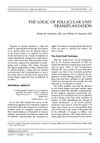The Art of Repair in Surgical Hair Restoration – Part II
October 2002
in “
Dermatologic Surgery
”
surgical hair restoration excision with reimplantation camouflage follicular unit transplantation donor supply tacking hairs angling of transplanted hair weighting ridging hair loss from facelifts donor repair hair transplant hair grafting hair camouflage FUT donor hair hair anchoring hair angle hair density hair ridging facelift hair loss donor hair repair

TLDR Successful surgical hair restoration requires careful planning, precise execution, and proper aftercare, using techniques like follicular unit transplantation and correct hair angling for best cosmetic results.
The 2002 document "The Art of Repair in Surgical Hair Restoration–Part II" discussed various techniques and challenges in surgical hair restoration. The authors emphasized the importance of meticulous surgical techniques and optimal use of limited hair supply for best cosmetic results. Techniques discussed included excision with reimplantation and/or camouflage, and follicular unit transplantation, which was deemed ideal due to its ability to maximize donor supply use, limit further damage, provide camouflage, and offer natural restoration. The study suggested spacing large follicular unit transplant sessions 8-12 months apart and having a 2-month interval between graft excisions and between the last excision and the camouflage procedure. The document also highlighted the use of "tacking hairs" to anchor hair in sparse areas, the importance of correct angling of transplanted hair, and the use of "weighting" to increase the cosmetic impact of follicular unit transplantation. It also addressed issues like ridging, hair loss from facelifts, and donor repair, emphasizing that a depleted donor hair supply is a major limitation to a successful repair. The document stressed the importance of careful planning, precise execution, and appropriate post-operative care in achieving successful outcomes in surgical hair restoration.

